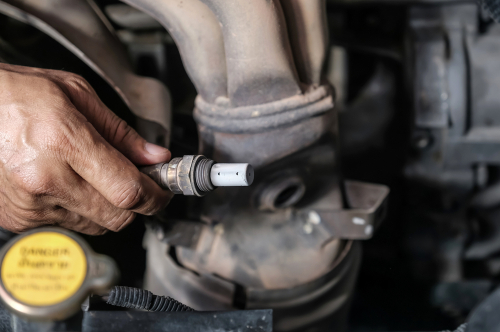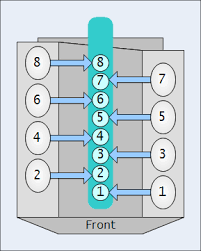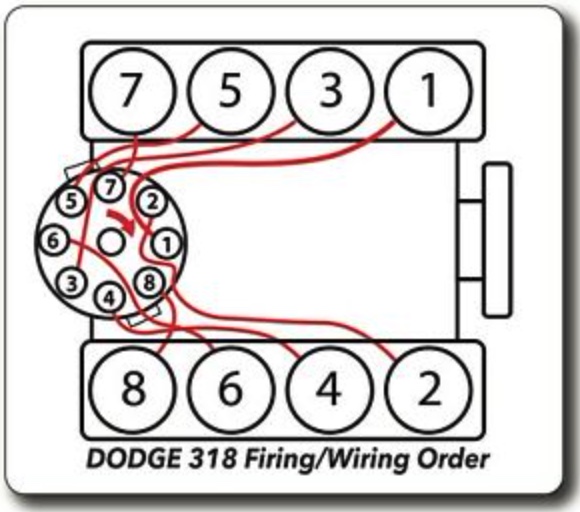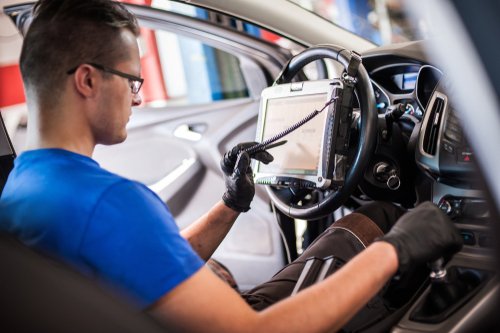If you are reading this, you’re probably trying to replace an oxygen sensor, and you want to make sure that you are replacing the right sensor. When looking under the hood, there is no label that states “bank 2 sensor 1”. You are going to need to know a little bit about the engine in order to determine which bank is bank 2, and which bank is bank 1.
Knowing for sure that you have found the right bank and sensor can keep you from replacing the wrong one, which can save you time and money. It doesn’t take very long to figure it out, and most of the work is going to lie in determining which bank is “bank 2”. Finding sensor 1 is easy.
A “bank” is a row of cylinders on an engine that has more than one head (think V6, or V8). These engines have two exhaust manifolds. On engines with only one exhaust manifold, there is only one bank (bank 1), and determining the right bank is a moot point.
After you determine where bank 2 is, then you can find sensor 1. Sensor 1 is the first sensor coming from the engine side of the exhaust.
Let’s start with bank 2.
What is Bank 2?
Finding Bank 2 is the row of cylinders with cylinder 2. On most rear wheel drive cars, if you open the hood and stare at the engine, it’ll be on the left side (passenger side). That is MOST vehicles. Bank 2 will always be on the side of the engine with cylinder 2.
Where things get harrier is when you have a front wheel drive vehicle. You’ll need to find the front of the engine. That’s easy. It’ll be turning the alternator and other engine accessories. Most of the time, bank 2 will be the side closer to the glass, and bank 1 will be the side closer to the radiator. Below are some iron clad ways to verify that you are actually looking at bank 2.
Finding Bank 2
Obviously, you don’t want to go replacing parts with a “most of the time”. So how can we be sure that we’ve found cylinder 2 and bank 2. Here are some ways:
Check the Crankcase
Some engines come with a sticker that will show the firing order. You can use this to confirm where cylinder 2 is. It can also be stamped on the crankcase cover. If you don’t have any luck with that, we recommend using the OBDII scanner method outlined below.
Look Up the Firing Order
The local parts store can print up and give you the firing order. It should come with the cylinder numbers on the firing order.
Google can also be your friend. You can type in the firing order for your make, model, year, and engine and check the images. It’ll more than likely be there. It would be a lot better to get this information from a dealer parts department before going this route. Here’s a pretty comprehensive guide to firing orders.
If you have a scanner, we would recommend using it before using the internet to find the firing order.
Scanner Method
If you are looking for bank 2 sensor 1, you’ve likely got an OBDII scanner. Using it to determine which bank of cylinders is bank 2 is what we recommend. This method is iron clad and will tell you where bank 2 is without question. Here’s what you do.
- Plug the OB2 scanner into the port.
- Clear all of the codes.
- Unplug the wiring harness from the closest oxygen sensor you see to the exhaust manifold on either side of the engine.
- Turn the key on. The check engine light will pop on and stay on. You should not need to start the engine.
- Use this code to determine which side is bank 2.
When you use this method, the unplugged oxygen sensor will immediately flash a trouble code. Once you read the code, you’ll know if that sensor was on bank 1 or 2. That’ll be your definitive answer.
Where is Sensor 1?
Now that we definitely know where bank 2 is, we’ll check to see where B2S1 is by tracing the exhaust from the head to the muffler. It is the first sensor that you will come across. It will be in or around the exhaust manifold.
Conclusion
As you can see, most of the hard work involved in locating bank 2 sensor 1 lies in finding which side of the engine bank 2 is actually on. Once you do that, it’s pretty easy to trace the exhaust and determine where sensor 1 is.




